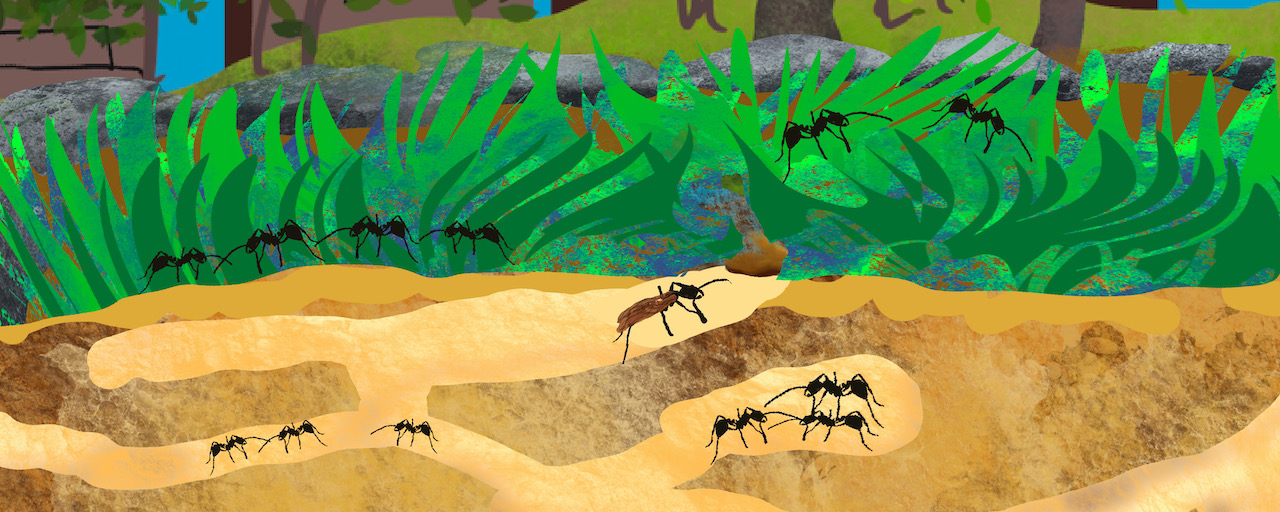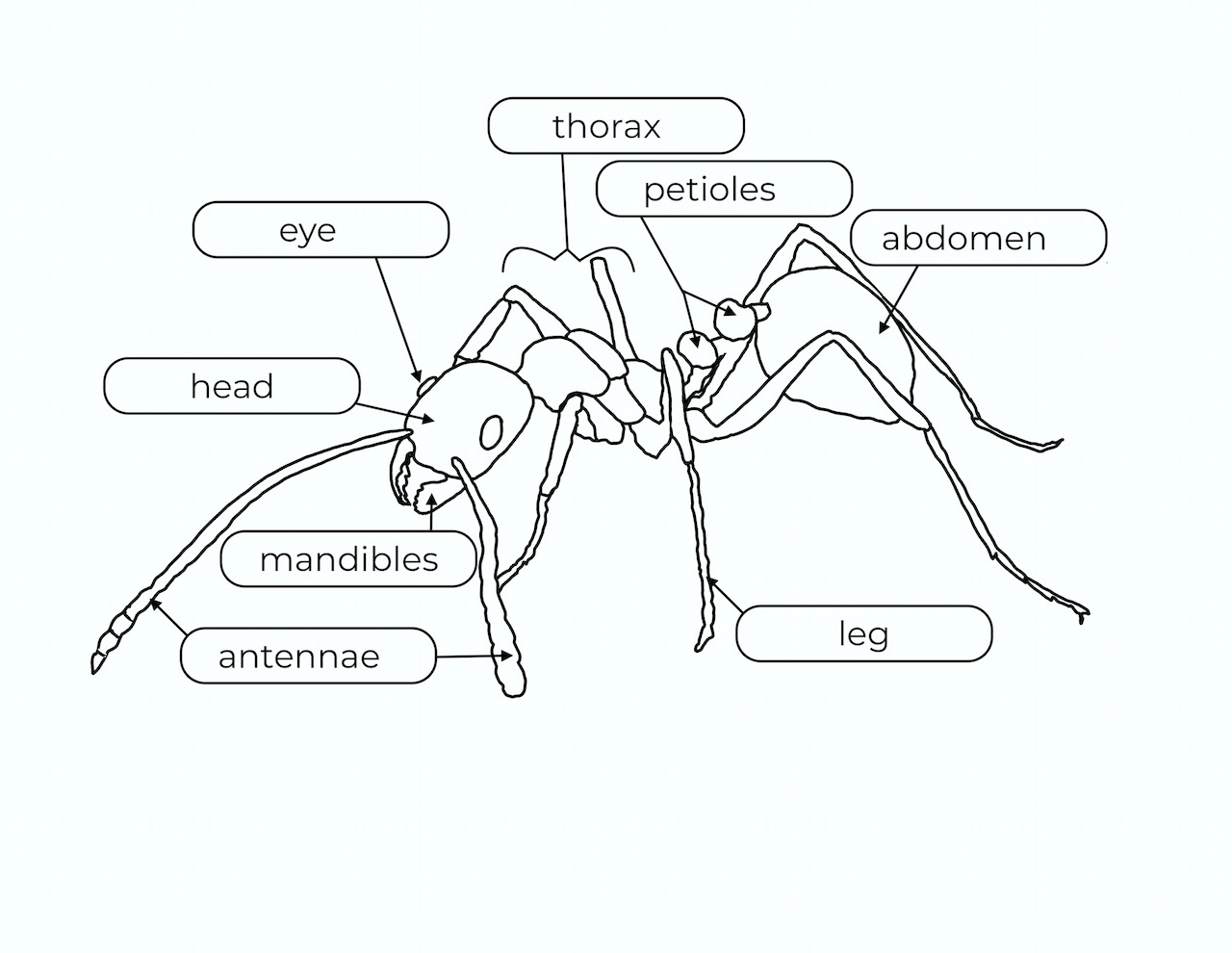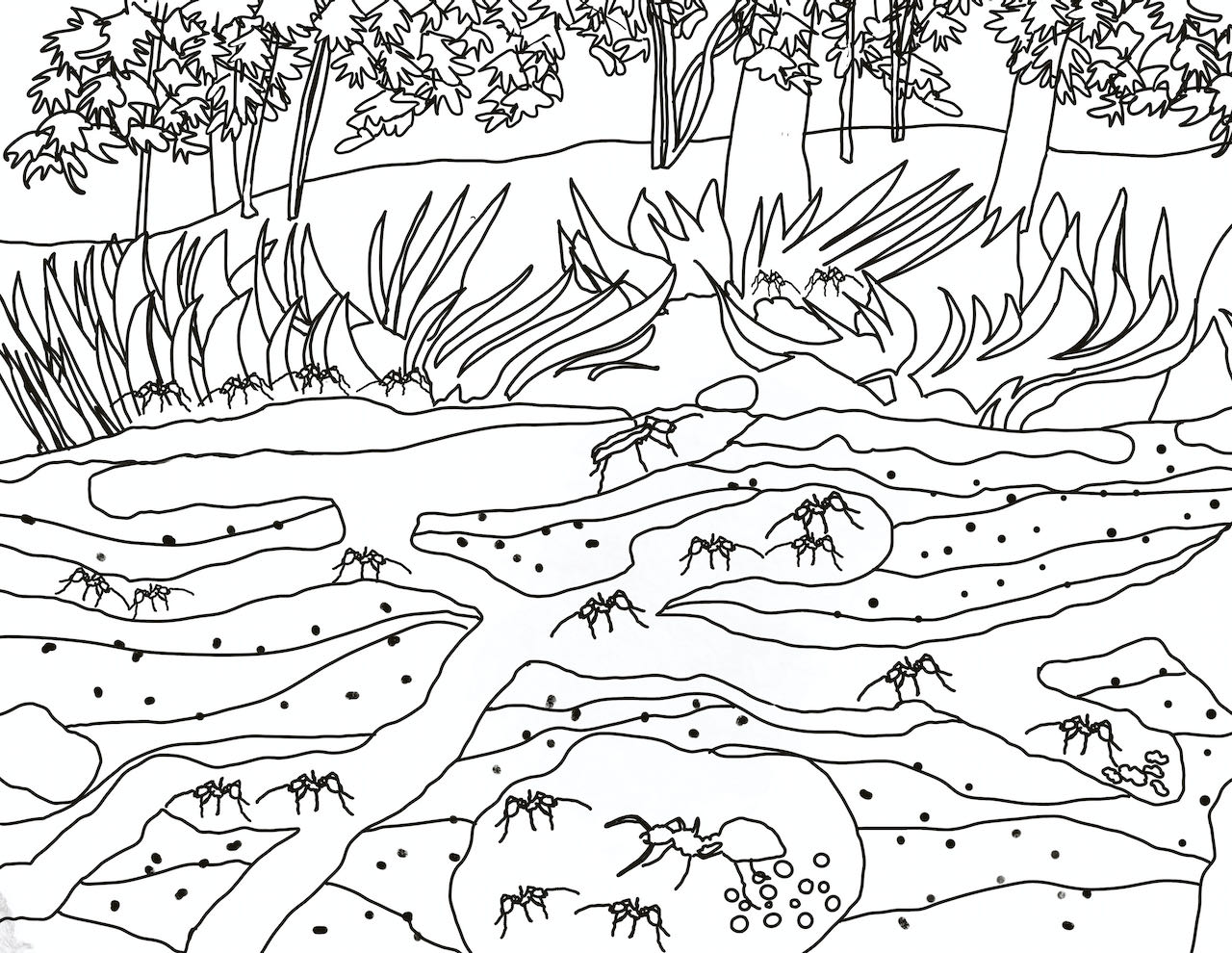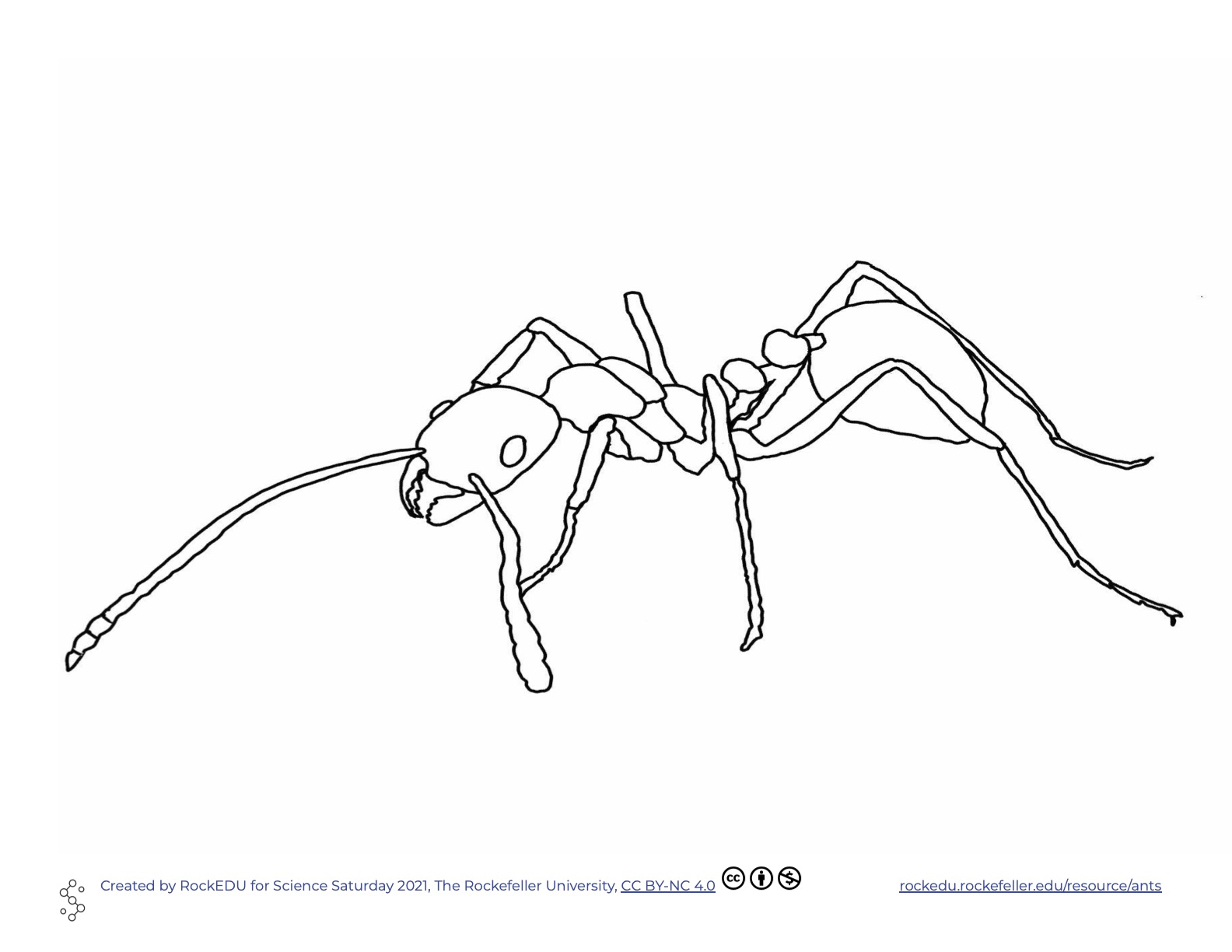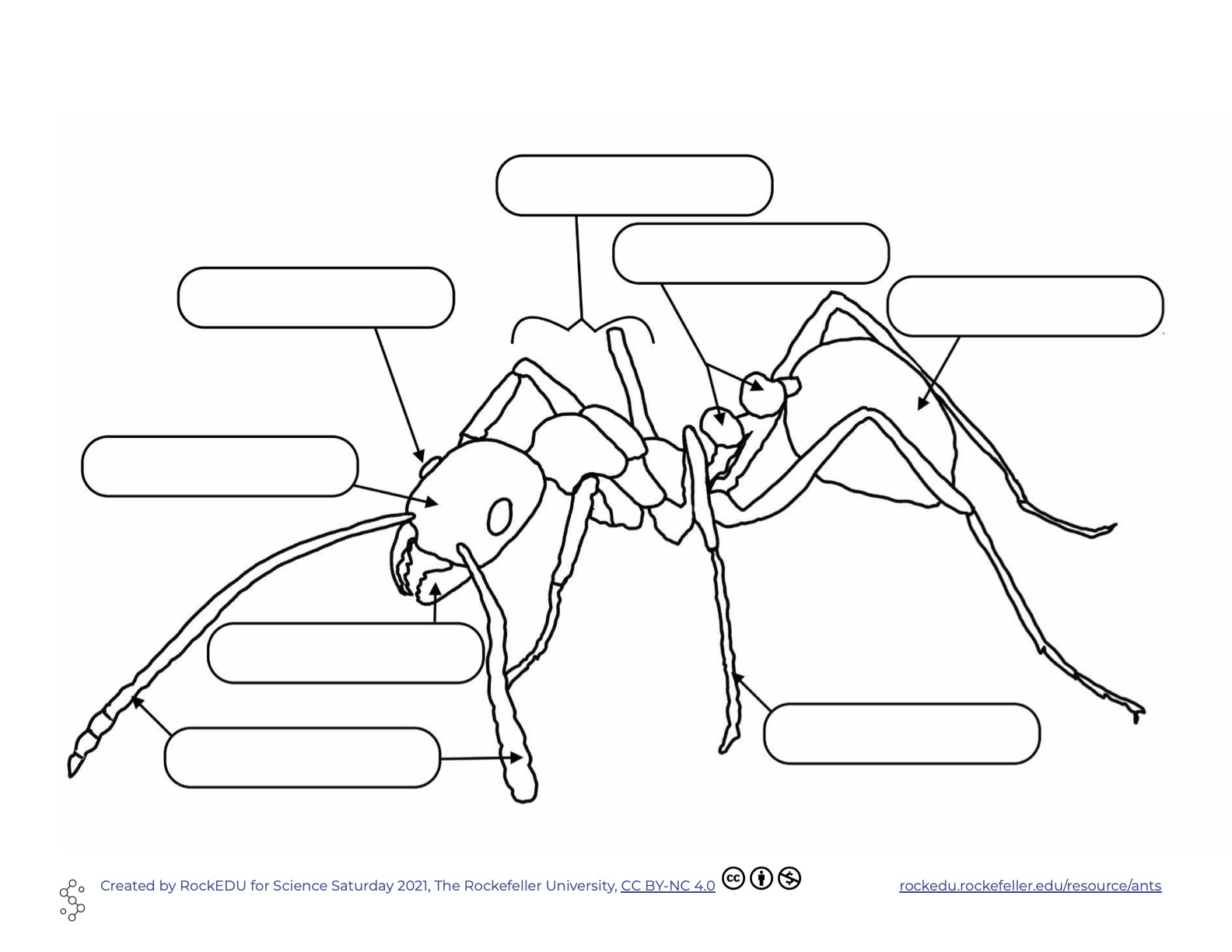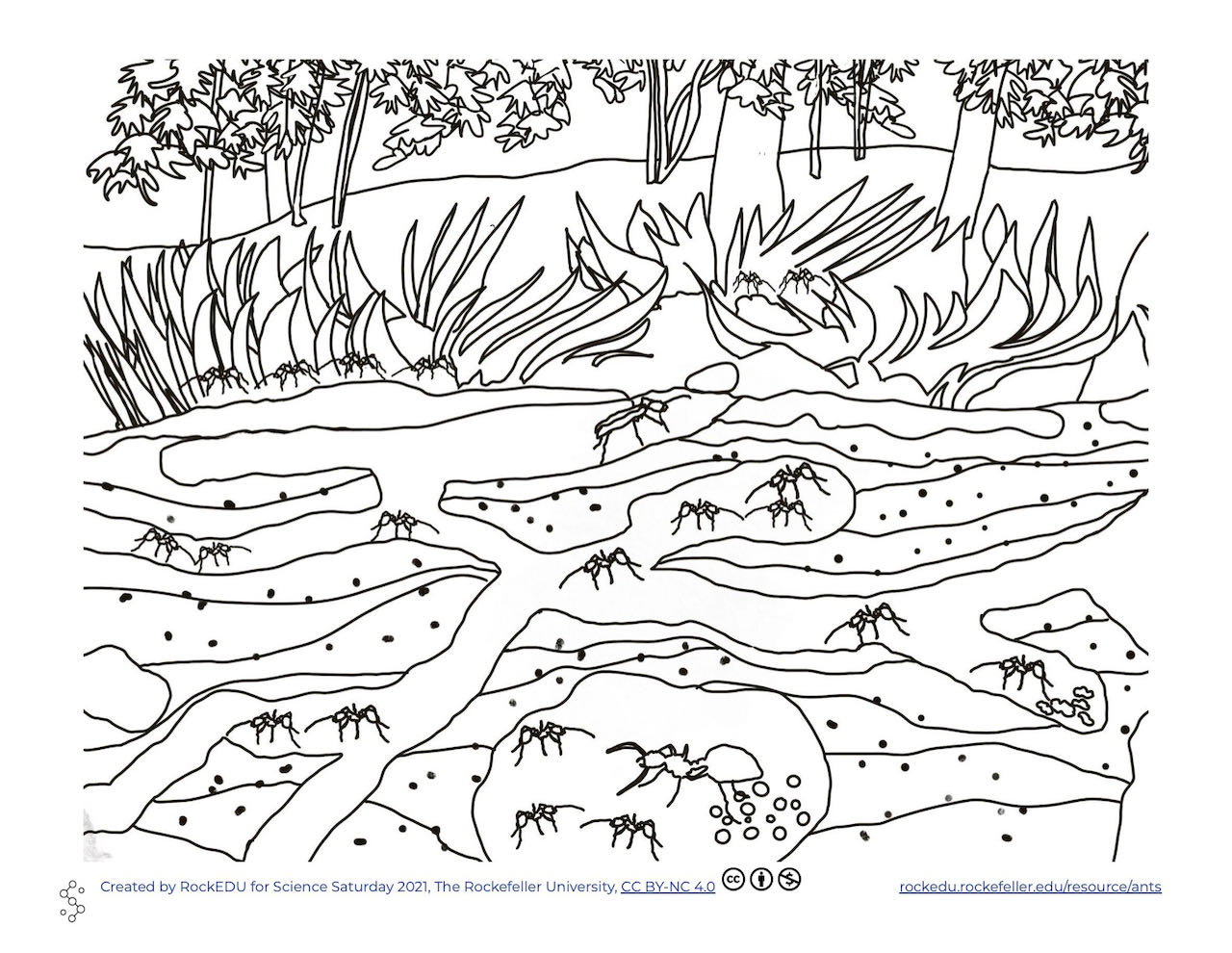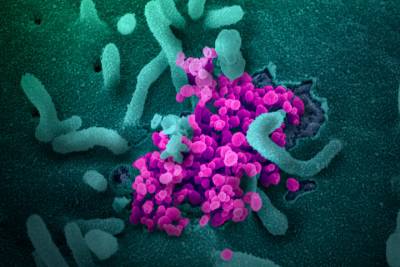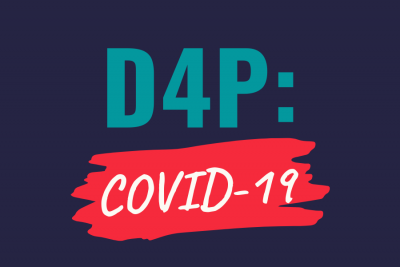Learn about Ants
What do all ants have in common? What makes an ant an ant?
Learn more about ants, download some coloring book pages to learn about ant anatomy and ant colonies, watch a video to get a peek inside Rockefeller’s ant laboratory, and then share your artwork back with us!
This work is licensed under CC BY-NC 4.0
Preview
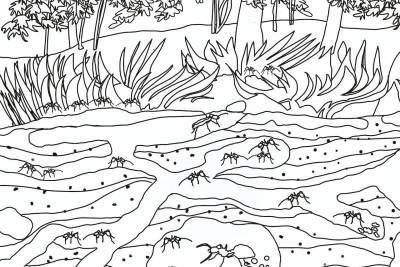
Ant Coloring Pages
Download the coloring PDF in the Save & Share Menu or find individual coloring page images in the Gallery

LAB Backstage Tour of an Ant Lab
Join ant scientist Kip Lacy from Rockefeller’s Laboratory of Social Evolution and Behavior to see what an ant lab and ant research can look like!

Padlet — share your work!
Download, print, and color in our ant coloring book pages, then share them back with us using our Padlet. We can’t wait to see what you make!
When you see an ant…
The ants you see are most always worker ants. They are female ants, but they do not lay eggs in this role. Worker ants can go out to find food (“foraging”), fight to protect their territory (known as “battles”), protect their nest (as ‘“warriors”), care for their young, or tend to their nest (such as by farming other animals like aphids, making and cleaning tunnels, etc.).
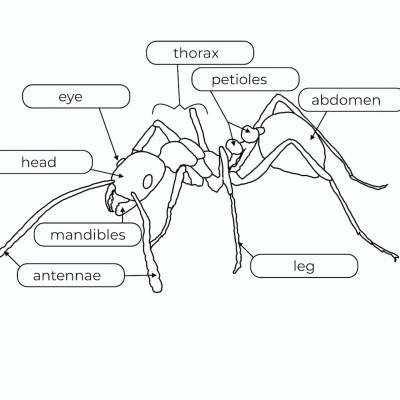
Ants eat a variety of foods, depending on the species and environment. Ants are omnivores, eating both plants and animals. Some ants hunt for other animals such as bugs, some prey on already dead larger animals, and some eat more plant products. Ants also like to eat sweet things, in nature and in your kitchen. In all of these cases, worker ants find food and bring it back to the nest to share.
An ant’s community…
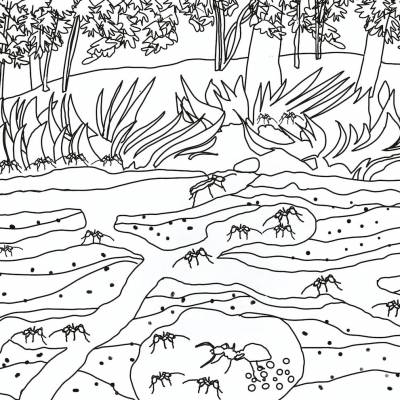
Most of these ants are workers. Workers can vary from each other by size and shape depending on the job they perform and can be referred to as minor, major, or supermajor based on their relative size.
A colony typically has one or more queen ants, which have significantly larger bodies (thorax & abdomen). Queens can have wings, though they often fall off after the queen begins to lay eggs. Queens mate with male ants, which also have wings as they have flown away from other nests where they were born. A colony without a queen will often collapse.
With so many species of ants, there are also exceptions!
LAB Backstage in the Kronauer Lab
Ant scientist Kip Lacy from the Laboratory of Social Evolution and Behavior at Rockefeller takes students on a tour of his laboratory, and answers kids’ questions about how ants live, eat, and reproduce.
Share your art with us:
Illustrations by Kristin Reiber Harris with inspiration from the Kronauer Laboratory at Rockefeller University, Alexander Wild, and Ant Wiki.
Gallery of Coloring Pages
View or download individual coloring pages here, or download the full PDF from the Save & Share menu

